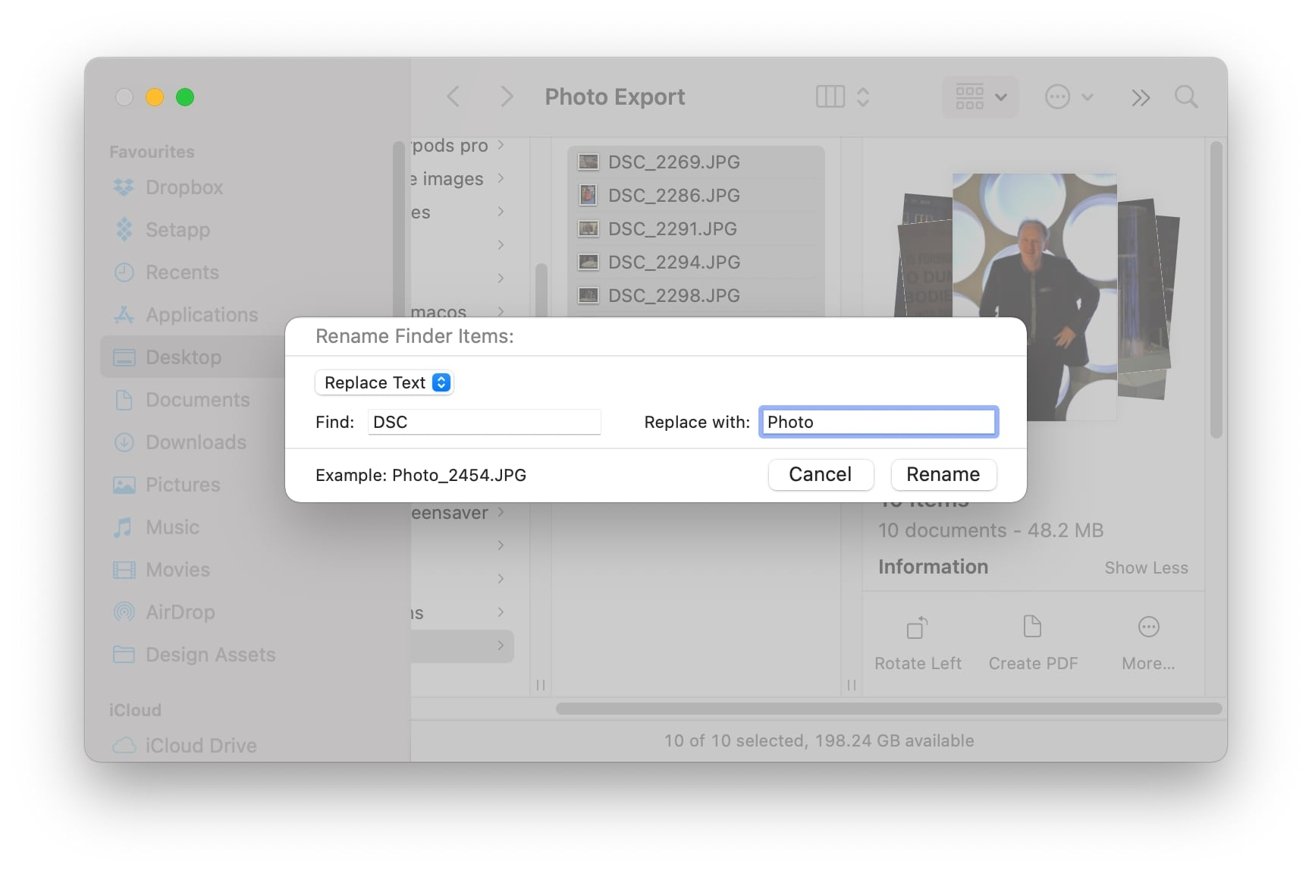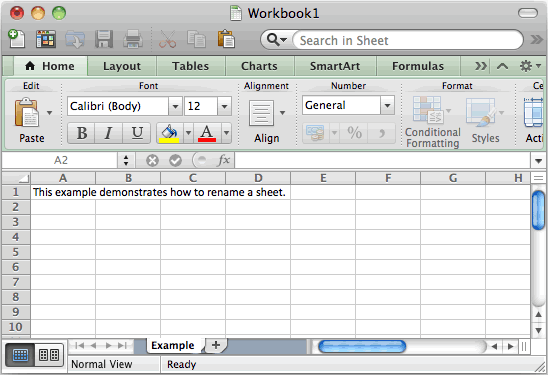
- How to rename files on mac c code#
- How to rename files on mac c plus#
- How to rename files on mac c mac#
- How to rename files on mac c windows#
How to rename files on mac c code#
That’s why the code preceding the Rename method looks so complicated: we have to construct the entire path for our new file name, assign it to the variable strNewName, then pass strNewName to the Rename method. Instead, you’ll have to use this line of code: errResult = objFile.Rename(“C:\Logs\Pl-File_1.txt”) This line of code won’t do it: errResult = objFile.Rename(“Pl-File_1.txt”) Suppose you want to rename the file C:\Logs\File_1.txt to C:\Logs\Pl-File_1.txt. The other thing to keep in mind is the fact that when you rename a file using WMI, you must pass the entire file path to the Rename method. For now, just copy the code as-is, and – if necessary – change C:\Logs to the appropriate folder. For more information, check out this portion of the WMI SDK. Instead, we have to use an Associators Of query to achieve the same effect.Īs you might expect, a complete discussion of Associators Of would never fit in this little column. You might think that the Win32_Directory class would have a property named Files that would list all the files found in that folder. In this case, we’re associating Win32_Directory (the class that lets us manage folders) with CIM_DataFile (the class that lets us manage files). (“ASSOCIATORS OF Where ” _Īn Associators Of query does pretty much what the name implies: it enables you to associate two WMI classes. Set colFileList = objWMIService.ExecQuery _ Set objWMIService = GetObject(“winmgmts:\\” & strComputer & “\root\cimv2”) (We don’t, we just don’t want it to ever be said!) Here’s a script that does exactly what you want: strComputer = “.” Well, never let it be said that the Script Guys don’t listen to Microsoft’s customers. It’s interesting how many people need to do something similar: they need to rename all the files in a given folder, either by appending the date, changing the file extension, or – in this case – tacking pl- to the beginning of each file name.
How to rename files on mac c plus#
The app is smart enough to know there's a new name and everything is fine.Hey, Scripting Guy! Can I use a script to rename all the files in a directory and include a “pl-” prefix plus the original file name? It doesn't trip up the app by renaming it outside of the app. In addition, if I were to have renamed this in the Finder here while I'm working on it, you can see it updates here in the Dock. I can now change it and the change is reflected there in the Finder. So I can go and rename and you can see it selects it there at the top. You can also go to File, Rename in the app that you're working on it on. So there are several different ways to rename files on your Mac. I'll be able to continue working with the file while it's open.
How to rename files on mac c mac#
As a matter of fact, not only can you change the name, but you look and you see where it says Where, I can actually move to another location while I'm working on the document on a Mac and it won't conflict with anything. Changing the name while you have it open isn't going to mess anything up. Notice that it changes the name right here as well. So I'm working on it, I'm editing it, I'm viewing it, and doing whatever and I change the name. Now the cool thing is I'm actually renaming the file while it's opened. I can click in there and it comes up with Name, Tags, and other things. So I've opened it up and I can rename it now by going to the title bar up here. You can do it while you're actually working with the file. There's another way to rename files on the Mac which is extremely handy. So you want to make sure you click once, and then click again with purpose with a little space between the clicks. If you click too quickly sometimes it's counted as a double click. It's a lot easier to just hit Return or to click again there. In addition once you have a file selected you can go to File, Rename and select that as well. But here on Mac it actually brings you into a file renaming mode and you can type the new name.
How to rename files on mac c windows#
Now in Windows I know that opens up the file or tries to open up the document. For instance, I can select a file and instead of having to click very carefully on the name I can simply hit the return key. So you can rename the entire thing, including the extension, if you want.īut there are other ways to do it as well. If you want to include the extension you can, of course, select the entire thing by clicking and dragging. In other words not including the extension.

It automatically just gives you the portion of the name to left of the dot.


Now if I click again, right on the name, you can see now I'm editing the name. Then you can see the name has a highlight on it.

So here I am in the Finder and I've got a file here called Letter.pdf. One of them is pretty much the same as how you do it on Windows. Video Transcript: When users switch from Windows to Mac sometimes they have the question, how do you rename files? There are several ways to do it on the Mac. Check out Five Ways To Rename Files On a Mac at YouTube for closed captioning and more options.


 0 kommentar(er)
0 kommentar(er)
